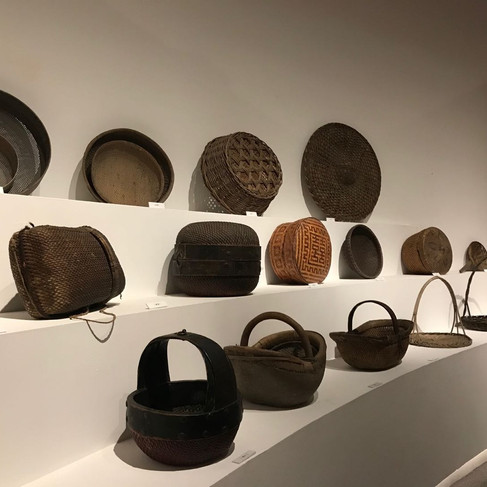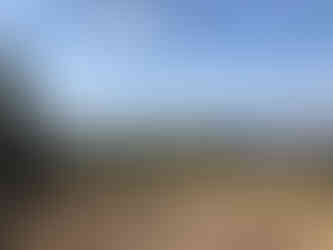愛新覺羅·弘曆《耕耤日有作》 “Written on the Day of Ploughing the Sacred Fields” by Aisin Gioro Hongli
- Rachelle

- Nov 9, 2020
- 6 min read
每毎錦壤潤含膏,
廼藉傳宣户禮曹。
百物由來惟糓寳, 四民端的是農勞。
青箱播種春泥活,
黄繖觀耕瑞旭髙。 愛聽禾詞三十六,
絶勝法曲奏雲璈。[1]
Every time the brocade soil is moist and fertile,
[I] then summon the Ministries of Revenue and Rites.
[Of] myriad things, grains have always been the only treasure;
[Of] the Four [Categories of the] People, [2] farmers are indeed the most painstaking ones.
The blue box [3] spreads seeds when the spring mud is lively;
The yellow canopy [4] views ploughing when the auspicious sun shines high.
[I] love listening to the “Thirty-Six Lines for Seedlings,” [5]
Which are way superior to religious songs played on the yunao[-gong].
*From Aisin Gioro Hongli 愛新覺羅·弘曆, Yuzhishi chuji 御製詩初集, 25.8a (Wenyuange yingyin Siku quanshu 文淵閣景印四庫全書 edition, Shanghai: Shanghai guji chubanshe, 1987).
[1] Red characters rhyme.
[2] The expression si min 四民 (Four Categories of the People) refers to shi 士 (gentlemen/gentry elites), nong 農 (farmers), gong 工 (artisans), and shang 商 (merchants). [3] The word qingxiang 青箱 (blue box) here refers to the box containing seeds for the ritual of ploughing the sacred fields. [4] A metaphor for the emperor. [5] Heci sanshiliu 禾詞三十六 (Thirty-Six Lines for Seedlings), or more often Sanshiliu heci 三十六禾詞 (here turned around for the sake of tones), are the lyrics written by Jiang Tingxi 蔣廷錫 (1669-1732) of the song dedicated to the ritual of ploughing the sacred fields.
Thanks to an online talk a few days before I started my travels, I learned about the Museum of Historical Architecture in Beijing. I visited it on a sunny day and greatly appreciated the quiet environment, especially after a whole day in the Palace Museum where hundreds of people squeezed against each other in front of every window at the exhibitions celebrating the 600th anniversary of the Forbidden City.
The Museum of Historical Architecture is located in Xiannongtan 先農壇 (Temple of Agriculture) in the west of Tiantan 天壇 (Temple of Heaven). It is an excellent museum that gives an overview of the art and history of various types of Chinese architecture as well as building technology.
The Temple of Agriculture was built for ritual purposes, announcing the importance the country attaches to agriculture. This particular site served such purposes from the early Ming, and the current building complex was shaped during the reign of the Qianlong Emperor 乾隆 (1711-1799, ruled 1735-1796). The poem presented here was allegedly written by the emperor about an important annual ritual at the temple, when the emperor performed ploughing on the sacred fields symbolically and then watched high officials do the same. [6] During his sixty-year reign, Qianlong performed ploughing personally 28 times and wrote quite a few poems about it.
The Guangengtai 觀耕臺 (Platform for Viewing Ploughing) where the emperor would do the viewing still stands there, although the surroundings have changed significantly. The sacred fields (about 800 square metres) in front of the platform have been replaced by trees and public footpaths.

A model of the platform and the plan for the ritual prescribing who should stand where.
The current state of the platform.
No matter how hard Qianlong tried to appear interested in ploughing in his poems, he was not a farmer. Performing ploughing symbolically 28 times during 60 years isn’t that much either. But well, we all know such an imperial ritual was a gesture that served political purposes. I hadn’t expected the emperor and his officials to do any serious ploughing on this occasion, and I was happy that I learned something about the history of this ritual and its dedicated architecture from the display in the museum.
Interestingly, in the afternoon of the same day, I seem to have been involved in a modern version of “viewing ploughing.”
At the National Museum, there was a temporary display called “Jizhu xiangchou: Shandong minyi zhan” 記住鄉愁:山東民藝展 (Remembering homesickness for the countryside: A display of folk craftsmanship of Shandong). There was a lot of interesting stuff on display, but unfortunately the explanatory material was scanty and often no more than a few general and laudatory words. When I was interested to learn more about, say, how the loom in Shandong was different from those from other regions, I only found a plate telling me that I was looking at a loom. The interior design and presentation of the whole display look modern, clean, and neat, which kind of made things look wrong. The farming tools on display were nice tools, but I expected to learn something about them in a museum. If I wanted to look at an array of rakes, shovels, hoes, buckets, baskets, etc. laid out orderly in a modern space, I might as well go to Wickes.[7]
I didn’t really see the display itself as a serious attempt to help visitors arrive at a deeper understanding of the folk culture of Shandong. It seems to aim at evoking good memories of the regional culture among those who are familiar with it, and stimulating romantic images about farmstead life among those who aren’t familiar with it. Perhaps because I had just visited the Platform for Viewing Ploughing in the morning, I felt like I was being invited simply to view some countryside objects at this display, a city people’s gesture towards valuing countryside culture. I could hear the song playing in my head during my visit:
我們在城市裡面找豬
想像中已找到了幾百萬隻
小鳥在公園裡面唱歌
它們獨自在想像裡跳舞
我們在想像中度過了許多年
城市又藝術地長出了農村 [8]
We’re looking for pigs in the city,
And have found several millions of them in our imagination.
Birds are singing in the park;
They are dancing alone in their imagination.
We’ve spent many years in our imagination,
And the countryside has grown out of the city in an artful way.
As it happens, I came across a third “platform for viewing ploughing,” a private one, in the mountain where I’m staying. One day, while I was walking around after lunch, I saw an armchair sitting in a field along the mountainside slope. The farmer was away, perhaps for lunch, and had left his working gloves on the armchair. The second time I visited the armchair had been moved, with a thermos cup sitting next to it, and the gloves were gone. I took both opportunities to walk up to where the armchair was and enjoy the splendid view from there.
Perhaps I’m romanticising it too, but I can imagine the farmer taking a break on his throne while looking over the fields he has worked on and the surrounding mountains. If that is indeed the case, I’d say his viewing platform is the loveliest of all the three.
First visit.
Second visit.
[6] For an overview of the origin and symbolic meaning of jitian 耤田, or 藉田, see Roel Sterckx, “The Economics Of Religion In Warring States And Early Imperial China,” in John Lagerwey and Marc Kalinowski (eds.), Early Chinese Religion, Part One: Shang through Han (1250 BC-220 AD) (Leiden: Brill, 2009), 844-845.
[7] By the way, a positive example of similar displays can be found in the Museum of English Rural Life in Reading.
[8] From Wutiaoren’s 五條人 “Chengshi zhaozhu” 城市找豬 (Looking for pigs in the city): https://www.youtube.com/watch?v=eXKXHGSB8Mk.
Copyright Declaration*:
The texts and images used on the website of Rachelle's Lab are either from the public domain (e.g. Wikipedia), databases with open data licences (e.g. Shuhua diancang ziliao jiansuo xitong 書畫典藏資料檢索系統, National Palace Museum, Taipei), online libraries that permit reasonable use (e.g. ctext.org), or original work created for this website.
Although fair use of the website for private non-profit purposes is permitted, please note that the website of Rachelle's Lab and its content (including but not limited to translations, blog posts, images, videos, etc.) are protected under international copyright law. If you want to republish, distribute, or make derivative work based on the website content, please contact me, the copyright owner, to get written permission first and make sure to link to the corresponding page when you use it.
版權聲明:
本站所使用的圖片,皆出自公有領域(如維基)、開放數據庫(如臺北故宮博物院書畫典藏資料檢索系統)、允許合理引用的在線圖書館(如中國哲學電子化計劃)及本人創作。本站允許對網站內容進行個人的、非營利性質的合理使用。但請注意,本站及其內容(包括但不限於翻譯、博文、圖像、視頻等)受國際版權法保護。如需基於博客內容進行出版、傳播、製作衍生作品等,請務必先徵求作者(本人)書面許可,并在使用時附上本站鏈接,註明出處。
*Read more about copyright and permission here.



















![虞儔《柿熟園夫不採可嘉》“Persimmons are ripe but not harvested by the gardeners – a good theme for praise” by Yu Chou [fl. 12th century]](https://static.wixstatic.com/media/044059_fb3c36e2fb144bf2aa5a7425cab0fa33~mv2.jpg/v1/fill/w_980,h_1307,al_c,q_85,usm_0.66_1.00_0.01,enc_avif,quality_auto/044059_fb3c36e2fb144bf2aa5a7425cab0fa33~mv2.jpg)
Comments